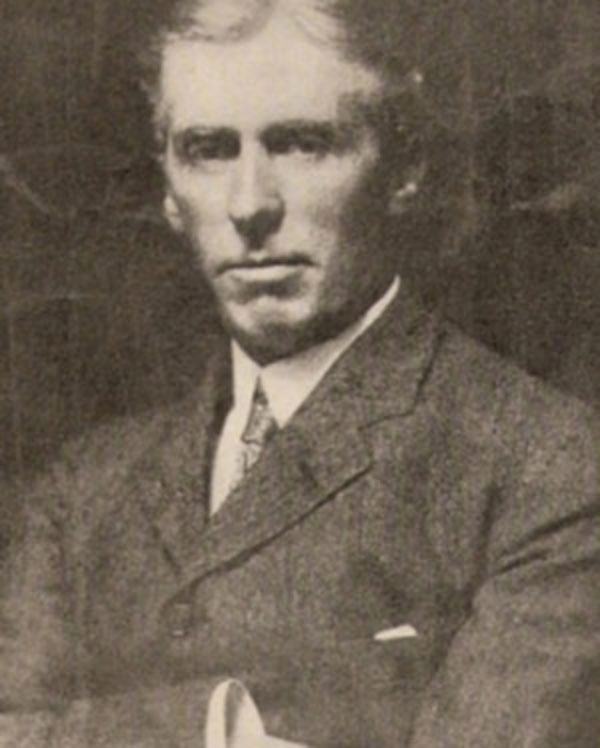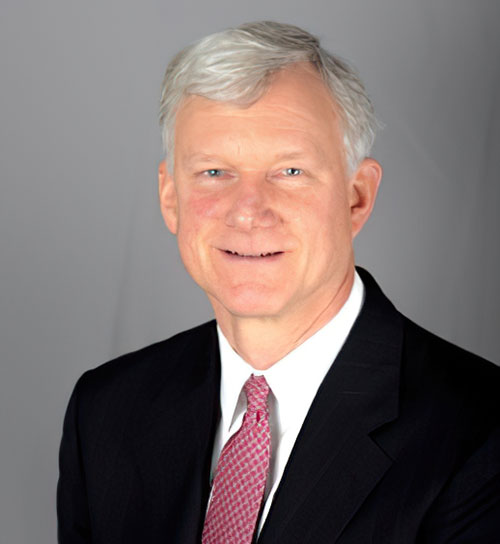-
 Cleveland H. Dodge officially founded the Cleveland H. Dodge Foundation on April 20th with original funding of $5 million. The Certificate of Incorporation stated the purpose of the Foundation to be “to promote the wellbeing of mankind” through investment in causes that were central to the Dodge family.
Cleveland H. Dodge officially founded the Cleveland H. Dodge Foundation on April 20th with original funding of $5 million. The Certificate of Incorporation stated the purpose of the Foundation to be “to promote the wellbeing of mankind” through investment in causes that were central to the Dodge family. -
 Henry Morgenthau Sr. and Samuel Train Dutton and Cleveland Hoadley Dodge in 1916Initial grants were an amalgamation of the commitments made by Cleveland H. Dodge prior to the founding of the Foundation. There were a great diversity of causes and organizations including funding for war relief efforts (i.e., American Red Cross), health-related organizations, museums, colleges, international organizations, service organizations and religious-affiliated causes. From its inception, however, the YMCA, Teachers College, The American University of Beirut and the Near East Foundation remained priority beneficiaries of the Foundation. The support for these organizations became a continuum for generations of Dodge family service and philanthropy.
Henry Morgenthau Sr. and Samuel Train Dutton and Cleveland Hoadley Dodge in 1916Initial grants were an amalgamation of the commitments made by Cleveland H. Dodge prior to the founding of the Foundation. There were a great diversity of causes and organizations including funding for war relief efforts (i.e., American Red Cross), health-related organizations, museums, colleges, international organizations, service organizations and religious-affiliated causes. From its inception, however, the YMCA, Teachers College, The American University of Beirut and the Near East Foundation remained priority beneficiaries of the Foundation. The support for these organizations became a continuum for generations of Dodge family service and philanthropy. -
 The death of the founder marked the end of an era. His son, Cleveland Earl Dodge, became president of the Foundation. His tenure was to be a seamless continuation of the same goals, principles, and guidelines that his father had established for the Foundation.
The death of the founder marked the end of an era. His son, Cleveland Earl Dodge, became president of the Foundation. His tenure was to be a seamless continuation of the same goals, principles, and guidelines that his father had established for the Foundation. -
 The Great Depression - The philanthropic world suffered hardship with shrinking spending on philanthropy as a result of the reduction in foundation investment income. Grace Parish Dodge, Cleveland H. Dodge’s widow, generously stepped in during these years to personally cover some of the Foundation’s committed appropriations and pledges. She recognized the value of the trust between benefactor and beneficiary regardless of difficult economic circumstances. The Foundation continued to provide funding to all beneficiaries in recognition of the extraordinary level of need in delivering critical services within their communities.
The Great Depression - The philanthropic world suffered hardship with shrinking spending on philanthropy as a result of the reduction in foundation investment income. Grace Parish Dodge, Cleveland H. Dodge’s widow, generously stepped in during these years to personally cover some of the Foundation’s committed appropriations and pledges. She recognized the value of the trust between benefactor and beneficiary regardless of difficult economic circumstances. The Foundation continued to provide funding to all beneficiaries in recognition of the extraordinary level of need in delivering critical services within their communities. -
 World War II - The Foundation responded to a variety of war relief organizations. The American Red Cross (ARC) was a principal beneficiary of war relief aid, continuing the Dodge family support that began during the Civil War. As WWII subsided, the Foundation’s attention turned to rebuilding efforts via various war restoration funds. Significant support was also appropriated for the Near East College Association, reinforcement of the strong legacy of Dodge family support.
World War II - The Foundation responded to a variety of war relief organizations. The American Red Cross (ARC) was a principal beneficiary of war relief aid, continuing the Dodge family support that began during the Civil War. As WWII subsided, the Foundation’s attention turned to rebuilding efforts via various war restoration funds. Significant support was also appropriated for the Near East College Association, reinforcement of the strong legacy of Dodge family support. -
On May 19th, 1949 Grace Parish Dodge died at the age of 91. For over thirty-two years she contributed both personal service and funding, and her passing was the unofficial end of the “founding years” of the Cleveland H. Dodge Foundation.
-
 The decade brought a period of broad modernization and growth for both U.S. society at large and for the Foundation. The Board of Directors doubled in size; a formal Board meeting calendar was established, the office moved to Manhattan and the Foundation published its first annual report. Investment growth provided the funding to expand the number of beneficiaries from 55 to 78 organizations. Through the continued leadership of Cleveland E. Dodge, expansion was directed in support of education and community welfare organizations.
The decade brought a period of broad modernization and growth for both U.S. society at large and for the Foundation. The Board of Directors doubled in size; a formal Board meeting calendar was established, the office moved to Manhattan and the Foundation published its first annual report. Investment growth provided the funding to expand the number of beneficiaries from 55 to 78 organizations. Through the continued leadership of Cleveland E. Dodge, expansion was directed in support of education and community welfare organizations. -
 These were turbulent times in American society with the civil rights movement, the Vietnam War, a rapidly industrializing economy and instability in Washington, D.C. The Foundation continued to support its customary beneficiaries in education, in community service and the Near East. Additionally, the Foundation supported higher education for underserved communities as part of the Foundation’s expanding reach. Efforts were also made to support building campaigns for capacity building at YMCA and YWCA community centers.
These were turbulent times in American society with the civil rights movement, the Vietnam War, a rapidly industrializing economy and instability in Washington, D.C. The Foundation continued to support its customary beneficiaries in education, in community service and the Near East. Additionally, the Foundation supported higher education for underserved communities as part of the Foundation’s expanding reach. Efforts were also made to support building campaigns for capacity building at YMCA and YWCA community centers. -
 The early 80s marked a period of transition for the Foundation with the retirement of Cleveland E. Dodge after a 56-year term as President. His son, Cleveland E. Dodge, Jr was appointed to follow him, which proved to be a catalyst for change in the Foundation.
The early 80s marked a period of transition for the Foundation with the retirement of Cleveland E. Dodge after a 56-year term as President. His son, Cleveland E. Dodge, Jr was appointed to follow him, which proved to be a catalyst for change in the Foundation. -
 The prosperity in the financial markets greatly increased the value of the investment portfolio in the 80s and 90s. As a result, the Foundation had the opportunity to invest in greater numbers of special project-directed grants each year. Increasing intensity was placed on New York City beneficiaries and the Foundation continues with that geographic center today. The Foundation also made a strategic decision to reaffirm its priority focus on education for grades K-12.
The prosperity in the financial markets greatly increased the value of the investment portfolio in the 80s and 90s. As a result, the Foundation had the opportunity to invest in greater numbers of special project-directed grants each year. Increasing intensity was placed on New York City beneficiaries and the Foundation continues with that geographic center today. The Foundation also made a strategic decision to reaffirm its priority focus on education for grades K-12. -
 In December 2000, Cleveland E. Dodge Jr. stepped down as president and William Dodge Rueckert, vice-president and great-grandson of the Founder, was appointed president of the Foundation. Shortly thereafter, on September 11th, 2001, the catastrophic events at the World Trade Center occurred. The Foundation stepped in with two emergency grants to help victims, their families, and rescue workers. These grants continued the Foundation’s tradition of helping in times of great need. Also aligned with its legacy, the Foundation made an unprecedented $2 million grant to the YMCA of Greater New York to help renovate and expand all branches. The focus was consistent, i.e., to assist agencies that are working to transform the lives of disadvantaged people throughout the New York City area. The end of the decade coincided with a global financial crisis and with it a 35% decrease in the value of the endowment. The Board navigated the period by decreasing grant levels while continuing support of its beneficiaries throughout this difficult period.
In December 2000, Cleveland E. Dodge Jr. stepped down as president and William Dodge Rueckert, vice-president and great-grandson of the Founder, was appointed president of the Foundation. Shortly thereafter, on September 11th, 2001, the catastrophic events at the World Trade Center occurred. The Foundation stepped in with two emergency grants to help victims, their families, and rescue workers. These grants continued the Foundation’s tradition of helping in times of great need. Also aligned with its legacy, the Foundation made an unprecedented $2 million grant to the YMCA of Greater New York to help renovate and expand all branches. The focus was consistent, i.e., to assist agencies that are working to transform the lives of disadvantaged people throughout the New York City area. The end of the decade coincided with a global financial crisis and with it a 35% decrease in the value of the endowment. The Board navigated the period by decreasing grant levels while continuing support of its beneficiaries throughout this difficult period. -
 As the decade progressed, the shadows of the financial crisis subsided, and the endowment once again achieved consistent growth. The Foundation today remains highly focused on investments in education-based organizations, specifically early-childhood education. The Foundation has also made increased efforts to fund organizations that are smaller and more entrepreneurial with innovative approaches to education. Support for traditional, legacy organizations remains intact, with an internal shift towards targeting specific projects proposed by large, legacy institutions. Within the context of projects the Foundation can make a more significant difference in outcomes for the vulnerable populations.
As the decade progressed, the shadows of the financial crisis subsided, and the endowment once again achieved consistent growth. The Foundation today remains highly focused on investments in education-based organizations, specifically early-childhood education. The Foundation has also made increased efforts to fund organizations that are smaller and more entrepreneurial with innovative approaches to education. Support for traditional, legacy organizations remains intact, with an internal shift towards targeting specific projects proposed by large, legacy institutions. Within the context of projects the Foundation can make a more significant difference in outcomes for the vulnerable populations. -
 The Foundation celebrated its 100th Anniversary in the Fall of 2017. This landmark occasion was marked with a celebratory dinner commemorating all the foundation has accomplished in its first century of operations.
The Foundation celebrated its 100th Anniversary in the Fall of 2017. This landmark occasion was marked with a celebratory dinner commemorating all the foundation has accomplished in its first century of operations.
